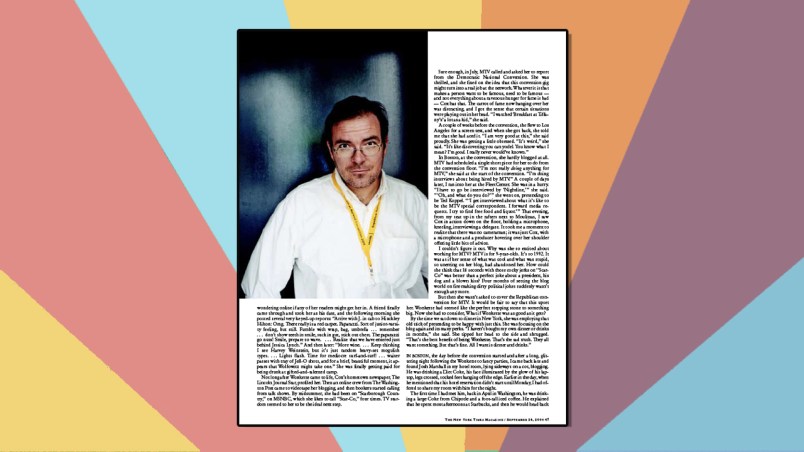Internet years move so fast that it’s easy to forget a certain mid-aughts cliche: Anyone writing digital-native news was surely a pajama-clad blogger sequestered in their parents’ basement. TPM helped change that — even if Josh sometimes did wear shorts to the office.
TPM’s coverage of the U.S. attorney firing scandal in the mid-2000s helped put the site on the map, and it was the first digital news operation to earn a George Polk Award in 2008. The next year, Time magazine named TPM one of the top blogs of 2009.
All that attention paid to a scrappy startup was bemusing to the small staff hammering away at the time, most of them from a modest office in Manhattan’s Flower District.
“I think it was a little bit humbling, I hope it was a little bit humbling, 15 years ago to realize that the guy with his blog could actually do stuff. You didn’t have to be a New York Times reporter to be someone to call up and ask questions,” said Sean Flynn, a GQ correspondent who profiled Josh in November 2007 with the auspicious headline “Give This Man a Pulitzer.”
One way TPM distinguished itself from its mainstream media peers early on, and throughout the U.S. attorney coverage, was its embrace of the audience — understanding that a group of well-informed and highly engaged readers might know more than you do, and could be brought into the editorial process.
“Another thing that occurs to me that was novel about Josh’s approach was treating smart and informed readers as sources,” said Quartz CEO Zach Seward, who profiled TPM for Harvard’s Nieman Lab in 2009. “Prior to that, in general, a source was someone with inside information and an expert is somebody you call up for domain expertise. I think TPM kind of blurred that.”
Flynn also pointed to TPM’s embrace of the audience.
“It’s a self-selecting audience, very well-educated and smart and very engaged, but he had the lack of ego just to embrace that,” Flynn said of Josh. “There are people out there who know things and my job is to pull things together. Put it into context.”
“Josh finding, again, that sweet spot, sure I can just let everyone run wild in the comment section or I can take these tips and information and piece it together.”
The U.S. attorney investigation wasn’t the result of one single blockbuster scoop or magazine-length feature. It was constellation of stories that over time painted a picture of political corruption. That iterative approach was born of the blogosphere and gave the story legs over time. It also cemented an editorial approach that continues today, from following Trump’s bonkers post-election antics as he attempts to undermine the next administration, to the President’s efforts to exclude undocumented immigrants from the decennial census count.
“I’ve always given Josh credit for inventing a new way to iteratively attack a big story,” former New Republic editor and Columbia Journalism Review contributor Gabriel Snyder said.
“All these things investigative reporters always did when they were sitting in a newsroom, the internet allowed you to share that,” Snyder added. “The benefits of sourcing that way, it was a true way of being able to start publishing on the story without knowing what the full story was going to be.”
Snyder said he has referred to several TPM stories — including the reporting on disgraced former lobbyist Jack Abramoff — as a model for how to chip away at a sprawling story.
“It really was this template for how you can bridge the gap between sort of the daily blogging format and the impact of the three month investigative reported piece,” he said.
Josh’s humble attitude and approach belies the impact TPM had on the journalism world when blogs were still considered the ugly stepchild to newspapers and TV networks.
“He always very chill, very modest about what he was doing,” Flynn said. “He’s a guy who uncovered what arguably was one of the biggest scandals, domestic scandals, of the Bush years. That was happening in plain sight but nobody else picked up on that.”



 ANNIVERSARY MAIN PAGE
ANNIVERSARY MAIN PAGE